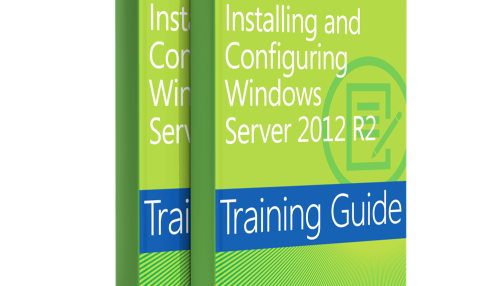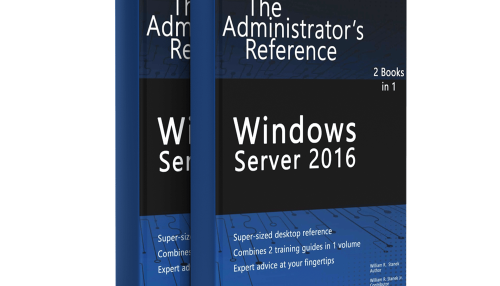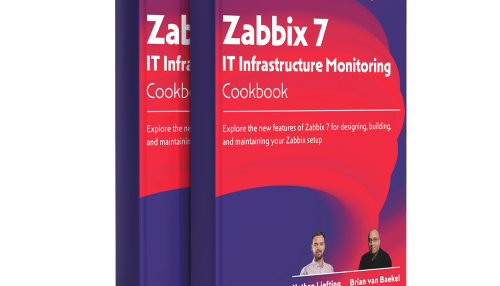Pro SQL Server 2019 Administration
فهرست مطالب کتاب Pro SQL Server 2019 Administration:
Chapter 2: GUI Installation
Chapter 3: Server Core Installation
Chapter 4: Installation on Heterogeneous Operating Systems
Chapter 5: Configuring the Instance
Chapter 6: Database Configuration
Chapter 7: Table Optimizations
Chapter 8: Indexes and Statistics
Chapter 9: Database Consistency
Chapter 10: SQL Server Security Mode
Chapter 11: Encryption
Chapter 12: Backups and Restores
Chapter 13: High Availability and Disaster Recovery Concepts
Chapter 14: Implementing Always On Availability Groups
Chapter 15: Implementing Log Shipping
Chapter 16: Scaling Workloads
Chapter 17: SQL Server Metadata
Chapter 18: Locking and Blocking
Chapter 19: Extended Events
Chapter 20: Query Store
Chapter 21: Distributed Replay
Chapter 22: Automating Maintenance Routines
Chapter 23: Policy-Based Management
Chapter 24: Resource Governor
The Linux Programming Interface A Linux and UNIX System Programming Handbook
فهرست مطالب کتاب The Linux Programming Interface:
Preface
Chapter 1: History and Standards
Chapter 2: Fundamental Concepts .
Chapter 3: System Programming Concepts.
Chapter 4: File I/O: The Universal I/O Model
Chapter 5: File I/O: Further Details
Chapter 6: Processes
Chapter 7: Memory Allocation.
Chapter 8: Users and Groups
Chapter 9: Process Credentials
Chapter 10: Time.
Chapter 11: System Limits and Options
Chapter 12: System and Process Information
Chapter 13: File I/O Buffering.
Chapter 14: File Systems
Chapter 15: File Attributes
Chapter 16: Extended Attributes
Chapter 17: Access Control Lists
Chapter 18: Directories and Links
Chapter 19: Monitoring File Events
viii Brief Contents
Chapter 20: Signals: Fundamental Concepts
Chapter 21: Signals: Signal Handlers
Chapter 22: Signals: Advanced Features
Chapter 23: Timers and Sleeping
Chapter 24: Process Creation
Chapter 25: Process Termination
Chapter 26: Monitoring Child Processes
Chapter 27: Program Execution.
Chapter 28: Process Creation and Program Execution in More Detail.
Chapter 29: Threads: Introduction
Chapter 30: Threads: Thread Synchronization
Chapter 31: Threads: Thread Safety and Per-Thread Storage
Chapter 32: Threads: Thread Cancellation.
Chapter 33: Threads: Further Details
Chapter 34: Process Groups, Sessions, and Job Control
Chapter 35: Process Priorities and Scheduling
Chapter 36: Process Resources
Chapter 37: Daemons
Chapter 38: Writing Secure Privileged Programs
Chapter 39: Capabilities
Chapter 40: Login Accounting
Chapter 41: Fundamentals of Shared Libraries
Chapter 42: Advanced Features of Shared Libraries
Chapter 43: Interprocess Communication Overview
Chapter 44: Pipes and FIFOs
Chapter 45: Introduction to System V IPC
Chapter 46: System V Message Queues
Brief Contents ix
Chapter 47: System V Semaphores
Chapter 48: System V Shared Memory
Chapter 49: Memory Mappings
Chapter 50: Virtual Memory Operations
Chapter 51: Introduction to POSIX IPC.
Chapter 52: POSIX Message Queues
Chapter 53: POSIX Semaphores
Chapter 54: POSIX Shared Memory
Chapter 55: File Locking.
Chapter 56: Sockets: Introduction
Chapter 57: Sockets: UNIX Domain
Chapter 58: Sockets: Fundamentals of TCP/IP Networks
Chapter 59: Sockets: Internet Domains
Chapter 60: Sockets: Server Design
Chapter 61: Sockets: Advanced Topics
Chapter 62: Terminals
Chapter 63: Alternative I/O Models
Chapter 64: Pseudoterminals
Appendix A: Tracing System Calls
Appendix B: Parsing Command-Line Options
Appendix C: Casting the NULL Pointer
Appendix D: Kernel Configuration
Appendix E: Further Sources of Information
Appendix F: Solutions to Selected Exercises
Bibliography
Index
The LISP Network Evolution to the Next-Generation of Data Networks
فهرست مطالب کتاب The LISP Network:
Chapter 1: LISP and the Future of Networking
Chapter 2: LISP Architecture
Chapter 3: Data Center Trends
Chapter 4: The WideArea Network: Bringing Traffic from Access to the Data Center
Chapter 5: MegaScale Access Networks: LISP, User Access, and the Internet of Things
Chapter 6: Security
Chapter 7: LISP and the NextGeneration Mobile Network
Training Guide: Installing and Configuring Windows Server 2012 R2
فهرست مطالب کتاب Training Guide: Installing and Configuring Windows Server 2012 R2:
Introduction
CHAPTER 1 Preparing for Windows Server 2012 R2
CHAPTER 2 Deploying servers
CHAPTER 3 Server remote management
CHAPTER 4 Deploying domain controllers
CHAPTER 5 Active Directory administration
CHAPTER 6 Network administration
CHAPTER 7 Hyper-V virtualization
CHAPTER 8 File services and storage
CHAPTER 9 Print and document services
CHAPTER 10 Implementing Group Policy
CHAPTER 11 Configuring Windows Firewall and IPsec
Index
Ubuntu Linux Unleashed 2021 Edition
فهرست مطالب کتاب Ubuntu Linux Unleashed 2021 Edition:
Part I Getting Started
Part II Desktop Ubuntu
Part III System Administration
Part IV Ubuntu as a Server
Part V Programming Linux
Part VI Bonus Online Chapters
Windows Networking Troubleshooting
فهرست مطالب:
About the Authors
About the Technical Reviewer
Windows Troubleshooting Series
Chapter 1: Understanding Networks 1 Chapter 2: Managing Network Connections
Chapter 3: TCP/IP Networking
Chapter 4: What Causes Networking Problems
Chapter 5: Troubleshooting Networking 83 Chapter 6: Networking in a Virtual World
Chapter 7: Troubleshooting Mobile Worker and BYOD Networking Problems
Index
Windows Server 2016 The Administrator’s Reference
فهرست مطالب کتاب Windows Server 2016 The Administrator’s Reference:
How to Use This Guide
Print Readers
Digital Book Readers
Support Information
Conventions & Features
Share & Stay in Touch
Chapter 1. Welcome to Windows Server 2016
Chapter 2. Working with Windows Servers
Chapter 3. Configuring Server Settings
Chapter 4. Understanding Active Directory Connecting Network Resources
Chapter 5. Managing Active Directory
Chapter 6. Maintaining Active Directory
Chapter 7. Accounts: The Essentials
Chapter 8. Managing Account Policies
Chapter 9. Creating Accounts
Chapter 10. Working with Managed Accounts
Chapter 11. Managing Computers, Users and Groups
Chapter 12. Maintaining Your Servers
Chapter 13. Optimizing Server Performance
Chapter 14. Using Group Policy
Chapter 15. Maintaining and Troubleshooting Group Policy
Chapter 16. Optimizing Server Security
Chapter 17. Deploying Windows Server 2016
Chapter 18. Implementing TCP/IP Networking
Chapter 19. Data Storage: The Essentials
Chapter 20. Partitioning and Optimizing Drives
Chapter 21. Using TPM and BitLocker Drive Encryption
Chapter 22. Using Storage Spaces
Chapter 23. Using RAID
Chapter 24. Maintaining Partitions and Drives
Chapter 25. Implementing File Sharing
Chapter 26. Using Shadow Copies and Work Folders
Chapter 27. Managing Permissions and Auditing
Chapter 28. Configuring Disk Quotas
Chapter 29. Using Group Policy for Administration
Chapter 30. Implementing Print Services
Chapter 31. Configuring and Maintaining Print Services
Chapter 32. Implementing DHCP
Chapter 33. Managing and Maintaining DHCP
Chapter 34. Implementing DNS
Chapter 35. Managing and Maintaining DNS
Index
Windows Server 2019 Administration Fundamentals, Second Edition A beginner’s guide to managing and administering Windows Server environments
فهرست مطالب کتاب Windows Server 2019 Administration Fundamentals:
Preface
Chapter 1: Getting started with Windows Server
Chapter 2: Introducing Windows Server 2019
Chapter 3: Installing Windows Server 2019
Chapter 4: Post-Installation Tasks in Windows Server 2019
Chapter 5: Directory Services in Windows Server 2019
Chapter 6: Adding Roles to Windows Server 2019
Chapter 7: Group Policy in Windows Server 2019
Chapter 8: Virtualization with Windows Server 2019
Chapter 9: Storing Data in Windows Server 2019
Chapter 10: Tuning and Maintaining Windows Server 2019
Chapter 11: Updating and Troubleshooting Windows Server 2019
Chapter 12: Preparing for the MTA 98-365 Exam
Index
Windows Server 2019 Inside Out
فهرست مطالب کتاب Windows Server 2019 Inside Out:
Chapter 1 Administration tools
Chapter 2 Installation options
Chapter 3 Deployment and configuration
Chapter 4 Active Directory
Chapter 5 DNS, DHCP, and IPAM
Chapter 6 Hyper-V
Chapter 7 Storage
Chapter 8 File servers
Chapter 9 Internet Information Services
Chapter 10 Containers
Chapter 11 Clustering and high availability
Chapter 12 Active Directory Certificate Services
Chapter 13 Active Directory Federation Services
Chapter 14 Dynamic Access Control and Active Directory Rights Management Services
Chapter 15 Routing and Remote Access
Chapter 16 Remote Desktop Services
Chapter 17 Azure IaaS and hybrid services
Chapter 18 Windows Subsystem for Linux
Chapter 19 Hardening Windows Server and Active Directory
Chapter 20 Security systems and services
Chapter 21 Maintenance and monitoring
Chapter 22 Upgrade and migration
Chapter 23 Troubleshooting
Index
Wireshark Network Analysis (Second Edition) The Official Wireshark Certified Network Analyst Study Guide
فهرست مطالب کتاب Wireshark Network Analysis (Second Edition):
Chapter 1: The World of Network Analysis
Chapter 2: Introduction to Wireshark
Chapter 3: Capture Traffic
Chapter 4: Create and Apply Capture Filters
Chapter 5: Define Global and Personal Preferences
Chapter 6: Colorize Traffic
Chapter 7: Define Time Values and Interpret Summaries
Chapter 8: Interpret Basic Trace File Statistics
Chapter 9: Create and Apply Display Filters
Chapter 10: Follow Streams and Reassemble Data
Chapter 11: Customize Wireshark Profiles
Chapter 12: Annotate, Save, Export and Print Packets
Chapter 13: Use Wireshark’s Expert System
Chapter 14: TCP/IP Analysis Overview
Chapter 15: Analyze Domain Name System (DNS) Traffic
Chapter 16: Analyze Address Resolution Protocol (ARP) Traffic
Chapter 17: Analyze Internet Protocol (IPv4/IPv6) Traffic
Chapter 18: Analyze Internet Control Message Protocol (ICMPv4/ICMPV6) Traffic
Chapter 19: Analyze User Datagram Protocol (UDP) Traffic
Chapter 20: Analyze Transmission Control Protocol (TCP) Traffic
Chapter 21: Graph IO Rates and TCP Trends
Chapter 22: Analyze Dynamic Host Configuration Protocol (DHCPv4/DHCPv6) Traffic
Chapter 23: Analyze Hypertext Transfer Protocol (HTTP) Traffic
Chapter 24: Analyze File Transfer Protocol (FTP) Traffic
Chapter 25: Analyze Email Traffic
Chapter 26: Introduction to 802.11 (WLAN) Analysis
Chapter 27: Introduction to Voice over IP (VoIP) Analysis
Chapter 28: Baseline “Normal” Traffic Patterns
Chapter 29: Find the Top Causes of Performance Problems
Chapter 30: Network Forensics Overview
Chapter 31: Detect Network Scanning and Discovery Processes
Chapter 32: Analyze Suspect Traffic
Chapter 33: Effective Use of Command Line Tools
Appendix A: Resources on the Book Website
All Access Pass Training Offer
Zabbix 7 IT Infrastructure Monitoring Cookbook Explore the New Features of Zabbix 7 for Designing, Building, and Maintaining Your Zabbix Setup
فهرست مطالب کتاب Zabbix 7 IT Infrastructure Monitoring Cookbook:
Chapter 1 Installing Zabbix and Getting Started Using the Frontend
Chapter 2 Getting Things Ready with Zabbix User Management
Chapter 3 Setting Up Zabbix Monitoring
Chapter 4 Working with Triggers and Alerts
Chapter 5 Building Your Own Structured Templates
Chapter 6 Visualizing Data, Inventory and Reporting
Chapter 7 Using Discovery for Automatic Creation
Chapter 8 Setting Up Zabbix Proxies
Chapter 9 Integrating Zabbix with External Services
Chapter 10 Extending Zabbix Functionality with Custom Scripts and Zabbix API
Chapter 11 Maintaining Your Zabbix Setup
Chapter 12 Advanced Zabbix Database Management
Chapter 13 Bringing Zabbix to the Cloud with Zabbix Cloud Integration











